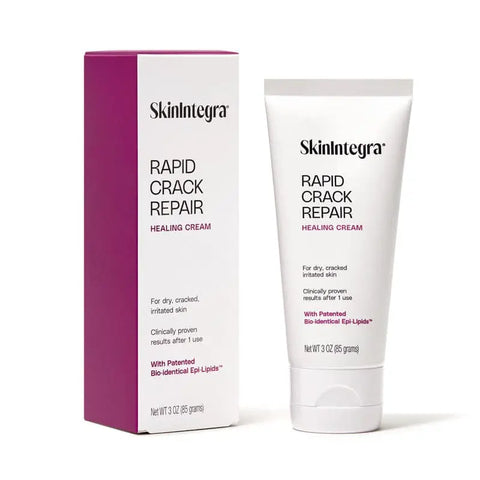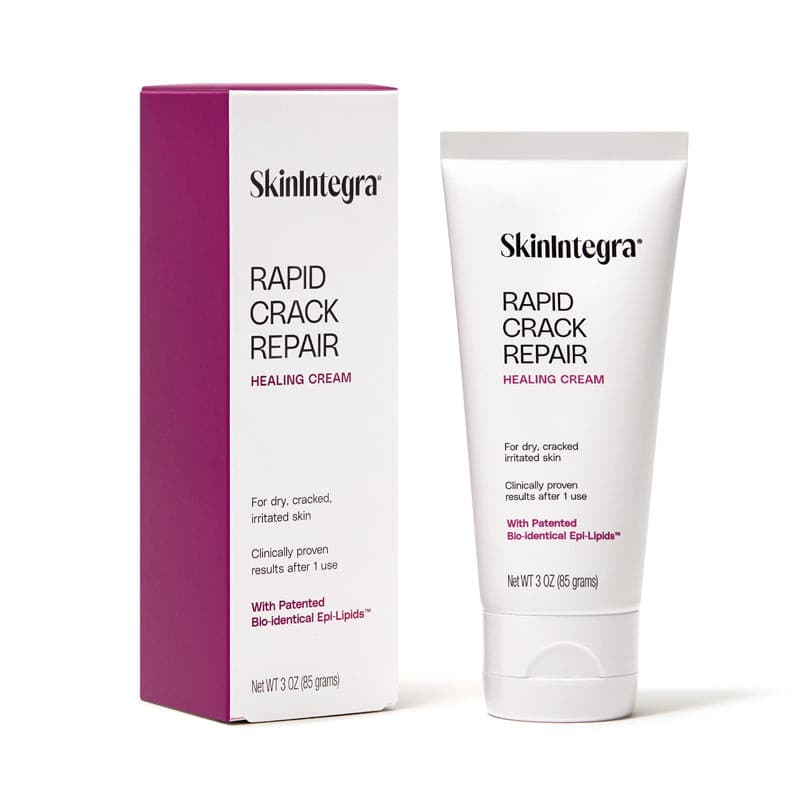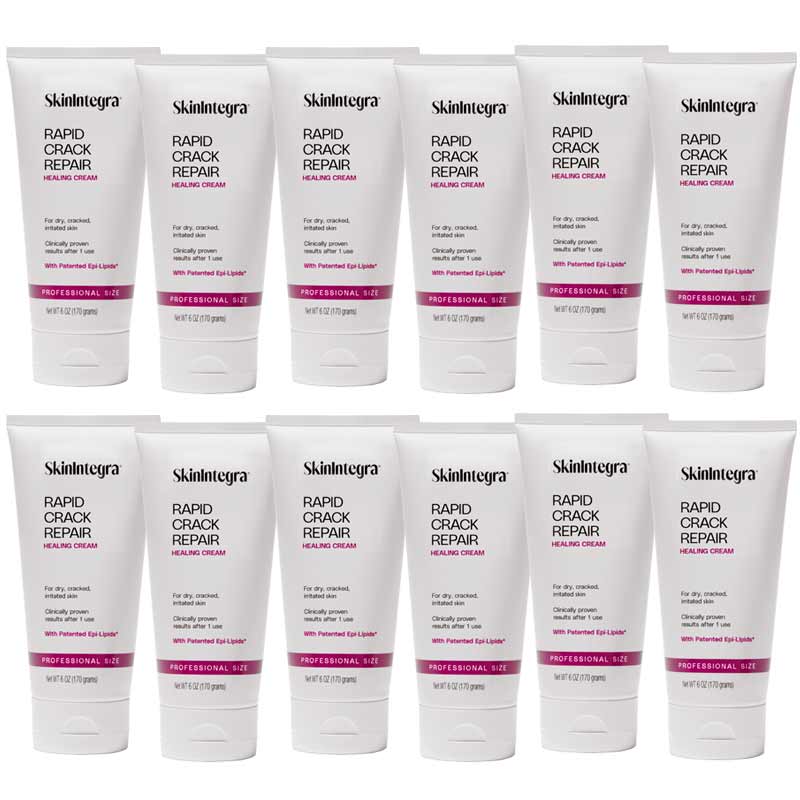Cracked heels—also called heel fissures—are not just unsightly or uncomfortable. For people with diabetes or sensitive skin, they can be a serious medical concern. Many over-the-counter creams promise results, but two ingredients stand out: urea and lactic acid.
Which one works better? This guide breaks down the benefits and drawbacks of each, explains their role in exfoliation and hydration, and helps you choose the right option—especially if you have diabetic or compromised skin.
What Causes Cracked Heels?
Cracked heels are usually caused by a combination of dry skin, friction, and pressure. The skin thickens and loses elasticity, eventually splitting open. For people with diabetes, poor circulation and reduced sensation can make this worse.
Common contributing factors:
-
Dry skin (xerosis)
-
Standing for long periods
-
Open-backed or ill-fitting shoes
-
Obesity
-
Peripheral neuropathy (common in diabetes)
-
Poor foot care or lack of moisturization
What Is Urea and How Does It Help?
Urea is a naturally occurring substance in the skin, where it plays an important role in maintaining moisture levels. In topical formulations, urea is often used in concentrations ranging from 10% to 40% to treat various skin conditions, including cracked heels.
Benefits of Urea:
- Hydration: Urea is a humectant, meaning it draws moisture into the skin, helping to alleviate dryness and soften thickened skin.
- Exfoliation: At higher concentrations (20% and above), urea also has keratolytic properties, meaning it helps break down dead skin cells, which is crucial for treating the thickened, callused skin around cracked heels.
- Enhanced Penetration: Urea can increase the absorption of other topical agents, making it effective in combination treatments.
- Safe for Diabetic Patients: In appropriate strengths, urea-based creams can be used safely by diabetic patients, as they hydrate and soften the skin without compromising its integrity.
Drawbacks of Urea:
- Irritation: High concentrations of urea (especially above 30%) can cause skin irritation, burning, or stinging, particularly in sensitive or broken skin.
- Overuse Concerns: For diabetic patients, excessive exfoliation from higher concentrations could potentially cause more harm than good, especially if cracks are deep or bleeding. It's important to use the appropriate strength to avoid complications and have someone regularly inspect their feet.
Clinical Evidence:
Clinical studies have demonstrated the efficacy of urea in treating xerosis and cracked heels. A randomized controlled trial published in the Journal of Dermatological Treatment found that a 25% urea cream significantly improved skin hydration and reduced heel fissures compared to a placebo over four weeks. For diabetic patients, a study in the Journal of Foot and Ankle Research highlighted that urea-based creams were effective at improving skin barrier function without increasing the risk of skin injury or infection.
What Is Lactic Acid and How Does It Help?
Lactic acid, an alpha-hydroxy acid (AHA), is another popular ingredient used for treating dry, cracked skin. It works by gently exfoliating the outer layer of dead skin cells and improving the skin's natural moisture balance.
Benefits of Lactic Acid:
- Exfoliation: Lactic acid promotes cell turnover and removes dead skin cells, helping to smooth out rough patches and reduce callus formation.
- Hydration: Lactic acid also acts as a humectant, drawing moisture to the skin and improving overall hydration.
- Mild Action: Compared to stronger exfoliants, lactic acid tends to be gentler on the skin, making it suitable for individuals with more sensitive skin, including those with diabetes.
Drawbacks of Lactic Acid:
- Potential for Irritation: While lactic acid is generally milder than urea, it can still cause skin irritation, redness, or stinging, especially if the skin is broken or overly dry.
- Less Potent for Severe Cases: For severe cracked heels or thick calluses, lactic acid may not be as effective as higher-concentration urea in removing tough dead skin.
- Sun Sensitivity: As an exfoliant, lactic acid can increase the skin's sensitivity to sunlight, potentially leading to sunburn. This may be less of a concern for feet but is worth noting for patients using it elsewhere on the body.
Clinical Evidence:
Research on lactic acid's efficacy in treating cracked heels is somewhat more limited compared to urea. However, a study published in the British Journal of Dermatology showed that a 12% lactic acid cream significantly improved skin hydration and reduced scaling in patients with dry skin disorders, including xerosis. Its ability to gently exfoliate while enhancing moisture makes it a viable option, particularly for mild to moderate cases of cracked heels.
What About Ammonium Lactate?
“Ammonium lactate” is a combination of lactic acid and ammonium hydroxide. It acts as a hydrating exfoliant but is typically used for milder dry skin and may not be ideal for deep heel fissures or diabetic skin.
Urea vs. Lactic Acid: Which Is Better for Cracked Heels?
The choice between urea and lactic acid depends largely on the severity of the cracked heels and the patient’s skin sensitivity. Urea, particularly in higher concentrations, is often preferred for treating severe cases of cracked heels due to its dual-action of hydration and exfoliation. For diabetic patients, urea-based treatments are generally safe when used appropriately and can help maintain the skin's natural barrier function, a key concern for this population.
Lactic acid, while a strong exfoliant, may be better suited for individuals with milder cracked heels or for those who experience irritation with urea. Diabetic patients with sensitive skin might also benefit from the gentler action of lactic acid, though it may take longer to achieve results compared to urea.
Recommended Strengths for Cracked Heels
- For Urea: The typical strength for treating cracked heels ranges from 20% to 40%. A 20-25% concentration is often recommended for diabetic patients to avoid irritation while still providing effective hydration and exfoliation.
- For Lactic Acid: A 10% to 12% concentration is generally recommended for dry, cracked heels. Diabetic patients should start with lower concentrations to ensure tolerance and reduce the risk of irritation.
Clinical Research Findings
The available clinical evidence indicates that both urea and lactic acid are effective in treating dry skin conditions like xerosis and cracked heels. However, urea tends to outperform lactic acid in terms of hydration, callus reduction, and the healing of more severe heel fissures, especially at higher concentrations (20% to 40%).
For diabetic patients, urea is generally better tolerated and provides greater improvements in skin barrier function without increasing the risk of irritation or injury. Lactic acid, while effective for exfoliation and mild cases of cracked heels, may not be as potent as urea for severe xerosis or fissured skin. Additionally, lactic acid is more likely to cause irritation in sensitive or broken skin, particularly at higher concentrations.
This comparative research underscores the importance of tailoring treatment to the severity of cracked heels and the patient’s underlying conditions, such as diabetes, to maximize benefits and minimize potential side effects.
For a complete treatment routine using a clinically validated 25% urea cream, read our guide to healing cracked and bleeding heels safely and effectively —especially if you have diabetes.
Why SkinIntegra Uses Both
SkinIntegra® Rapid Crack Repair Cream combines 25% urea and lactic acid in a patented formulation designed for fast, safe healing of dry, cracked feet—including diabetic skin.

What Sets It Apart:
-
Exfoliates and hydrates with urea and lactic acid
-
Contains barrier-restoring ingredients like hyaluronic acid, ceramides, essential fatty acids, and plant oils
-
Fragrance- and dye-free to avoid irritation
-
Clinically shown to work faster than 40% urea with less irritation
-
Approved by the APMA and recommended by podiatrists post-debridement
Shop SkinIntegra Rapid Crack Repair Cream
FAQ: Urea vs. Lactic Acid for Feet
Q: Is urea better than lactic acid for cracked heels?
A: For thick, dry, or fissured skin, yes. Urea (especially 25–40%) exfoliates and hydrates more aggressively. For diabetic feet, strengths between 10–25% are safest.
Q: Can I use both urea and lactic acid?
A: Yes! SkinIntegra combines both for a synergistic effect—strong results without harshness.
Q: Is lactic acid safe for diabetic feet?
A: At lower concentrations (10–12%), yes. It’s gentler and can hydrate and exfoliate without breaking down skin.





